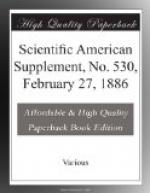It is neither possible nor desirable to catalogue the unprofessional practices which in one way or another come to the notice of those observant of current happenings in the several departments of engineering. It is the contention of some that right and wrong are relative terms, applying to no action or line of conduct save as it is considered in relation to coincident and contingent circumstances. I will not deny that this may be true of all professional acts, but the impossibility of an arbitrary classification under the heads right and wrong, honorable and dishonorable, need not make it difficult for a man to formulate a code of professional ethics by which his own conduct shall be governed. There are certain broad ethical principles which never change. One is that a man cannot serve two masters having conflicting interests, and be faithful to each. Another is that, however skillfully one may juggle words to conceal meanings or evade responsibility, if the intent to deceive is there, he lies. Professional ethics are no different from the ethics of the Decalogue; they are specific applications of the rules of conduct which have governed enlightened and honorable men in all ages and in all walks of life. It is only when the moral sense is blunted or temptation presents itself in some new and unrecognized form that it is difficult to draw the line between right and wrong. I am aware that a delicate sense of honor often comes between a man and his opportunities of profit, and that a fine sensitiveness is rarely appreciated at its value by those who employ professional service. I know that in this busy world men of affairs do not always stop to weigh motives, and that confident assurance always commands respect, while modest merit is distrusted. But I do not know that a man can sell his honor for a price, and retain thereafter the right to stand erect in the presence of his fellows. I do not know that any engineer can make for himself a creditable and satisfactory career of whom it cannot be said that, whatever his mistakes or successes, his failures or triumphs, he has held his professional honor above suspicion.
* * * * *
LIFTING A FORTY INCH WATER MAIN.
[Illustration: Raising A forty inch main on the Boston water works.]
The sketch below, reproduced from a photograph, shows the general method adopted for lifting a 40 inch water main on Brookline Avenue, in Boston, Mass. Engineering News says:
The work, which was commenced in June, 1884, included the raising of 1,000 feet of this main from to 18 feet to adjust it to a new grade in the avenue. The plan pursued by the Boston Water Department was about as follows:
After the pipe was uncovered, piles were driven in pairs on each side, 5 feet 6 inches apart, and in bents 12 feet apart; the pile-heads were then tenoned, and a cap made of two pieces of 4 by 12 in. stuff was bolted on as shown, and the bents stayed longitudinally. The lifting was done with the pipe empty, by screws 8 feet long, working in square nuts resting on a broad iron plate on the cap pieces. After all preparatory work was completed, the lifting of the pipe to its new position was accomplished in about nine hours.




